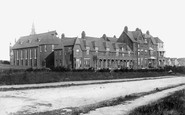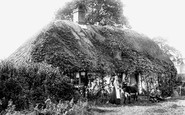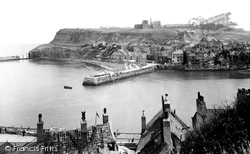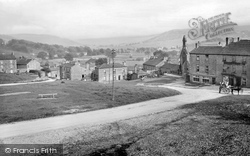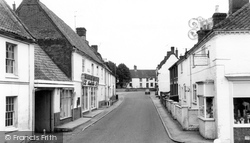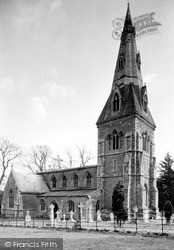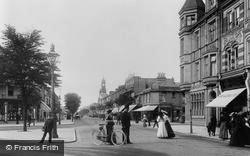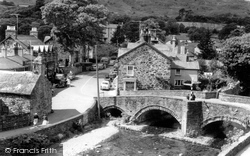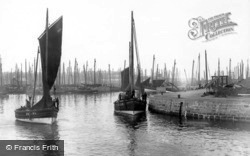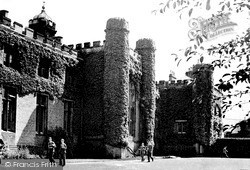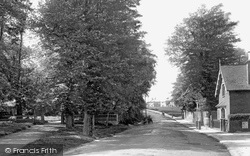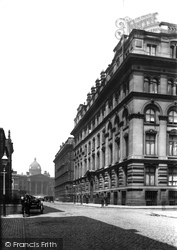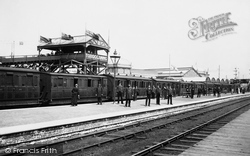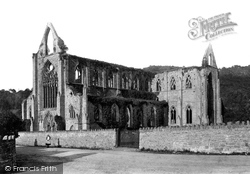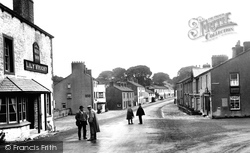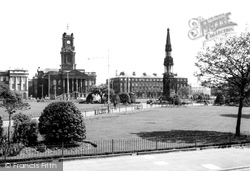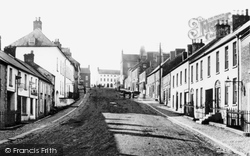Places
4 places found.
Those places high-lighted have photos. All locations may have maps, books and memories.
Photos
6 photos found. Showing results 681 to 6.
Maps
65 maps found.
Books
1 books found. Showing results 817 to 1.
Memories
4,591 memories found. Showing results 341 to 350.
A Life In Consett
I was born in Consett in 1951 and spent all of my life here, I can remember lots of things mentioned in previous letters especially the Rex, I spent lots of Saturday mornings there, also Rossi's and Dyambro's on Saturday ...Read more
A memory of Consett in 1951 by
Jtbells
This is the year I started on the building sites in 1963, I got a job on J. T. Bell's site in Whickam, the site hadn't been running long then as it was in the first stage. All the lads were mainly from Newburn, Lemington, and Throckley. If ...Read more
A memory of Newburn in 1963 by
The Back House
I was born in Sedgefield and lived in North Bitchburn until I was 7 years old, me and my twin sister Elizabeth and my mam amd dad who worked at the pipe yard. We lived in no 1a Constantine Terrace, it was the back half of ...Read more
A memory of North Bitchburn by
Why Was I Here?
I remember being sent to St Mary's Home when I was about 7 years old, I was taken by train, I can't remember by who, I was sent there because I was a sickly child, all due to not having enough food to eat at home, where things ...Read more
A memory of Broadstairs in 1953
Distant Memories
I had returned to UK from Queensland to visit my mother who was ill and waiting at the platform entrance at Waterloo station when a former colleague from Post Office Overseas Telegraph came up to me and we began a ...Read more
A memory of Frimley Green in 1978 by
The River
The River Avon dominated most of the kids' lives in the village! I remember swimming 'down the mill' and at Gunville where my Great Grandmother (Sarah Marks) lived. We used to scrounge used inner tyre tubes from Mr Stansfield (who ...Read more
A memory of Figheldean in 1957 by
Childhood In The 1950s In Caerau
I was born at 87 Victoria Street in 1945. My father was a miner and worked all his life in Caerau colliery. My mother came from London with her brothers and sisters, they were evacuated to Caerau after their house ...Read more
A memory of Caerau in 1953 by
18 Happy Years
We moved into Avon Carrow in November 1991, just after the M40 motorway had been extended to Warwick, and started the most rewarding living experience of our mature lives. The Carrow has an interesting history for such a ...Read more
A memory of Avon Dassett in 2009 by
Under An American Tank On The Bridge
My mother and I were returning from fetching water from the spring in the pub. Mother was carrying two full pails. As we were crossing the bridge an American tank came round the bend with one of its ...Read more
A memory of Heckfordbridge in 1943 by
How I Chose Somerton To Live
Whilst serving in the Fleet Air Arm at RNAS Yeovilton the squadron I was serving on had an organised function in the Red Lion and I well remember standing outside and saying to my brother, who was also on the same ...Read more
A memory of Somerton in 1975 by
Captions
925 captions found. Showing results 817 to 840.
Old deeds of many of the East Cliff houses often included particulars of 'drying grounds', the rights of which came with the building in question.
The name Hodder means 'pleasant stream'. It is a Celtic name, and it describes the river well.
Fortunately for the village, this was also the time of the new tourist industry: Victorians came in search of peace and tranquillity away from the industrial West Riding.
The lords of the manor, who took their name from the village, came here in the time of Henry II; John, son of Ybri de Belaugh, had a large estate.
Different businesses produced hats, dresses, watches and clocks; a team of rat-catchers came from the village, and were well-known across the county.
Marks & Spencer, who came in 1931, occupy the building to the left of the High Bridge Restaurant; Burton's (left) are still there, and have been joined by Dorothy Perkins.
In 1730 Mrs Orton ensured the village's undying fame, for although she sold it at Stilton in Huntingdonshire, it was here that she created Stilton cheese.
Marks & Spencer, who came in 1931, occupy the building to the left of the High Bridge Restaurant; Burton's (left) are still there, and have been joined by Dorothy Perkins.
After an enquiry Essex County Council duly authorised the new Board which came into being as the Great Clacton Local Board on 17 June 1891.
This extremely attractive village lies in the heart of mountainous Snowdonia on the Glaslyn river, and this fine bridge has been a magnet for visitors, who came in increasing numbers following the war.
There are several stories as to how the zulu got its name, but the first of the type does appear to have been built around 1879 at the time of the Zulu War.
In 1777 an Act of Parliament allowed for the founding of Exhibitions and the appointment of assistant masters, and thus in 1778 Dr Thomas James became the first Headmaster.
Already 21 years old when he came to Epsom, he had by then earned £25,000 at stud.
Aytoun Street gets its name from Roger Aytoun (known as Spanking Roger), who came to Manchester from Scotland as an officer in the army.
On one day over the Bank Holiday, a total of 74,600 visitors were recorded in one single day, and in the 166 days it was opened, 4.75 million people came to view the delights.
The first brothers of the establishment came directly from Normandy. The remains to be seen today actually date from the abbey's rebuilding in the course of the 13th to the 15th centuries.
Gone from the North Beck were the perch and the grayling; in their place came rats and rubbish.
Note the New Inn on the left of the picture, and how large the name-board of the publican was. The village policeman in his cape stands in the middle of the road.
The stall backs are fine pedimented panels dating from the 17th century, and came from Oxford Cathedral.
However, Trew came up with a different scheme, one that would overcome expensive dredging operations, and the problems caused by several weirs that had been built down-river.
Former residents of the village include the Rowntree family and the Spencers of M & S fame.
In about 1824 he came to a small hamlet of a few hundred people, started his ship-building firm, and set about planning a town.
The lamp tells of a long-established gas works; the railway came not long afterwards. The mile-post on the hill still tells of 70 miles to Dublin, but those are Irish miles.
It will always be connected with Richard Cobden, the reformer, who owned one of the mills here - much of his wealth came from that mill.
Places (4)
Photos (6)
Memories (4591)
Books (1)
Maps (65)

